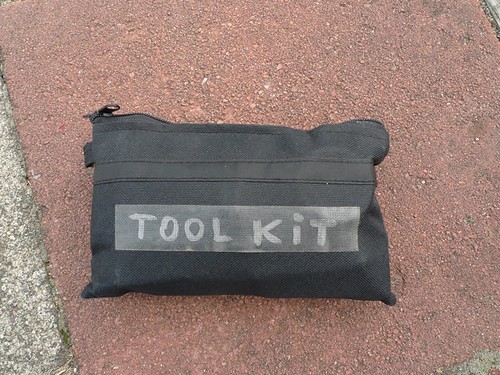
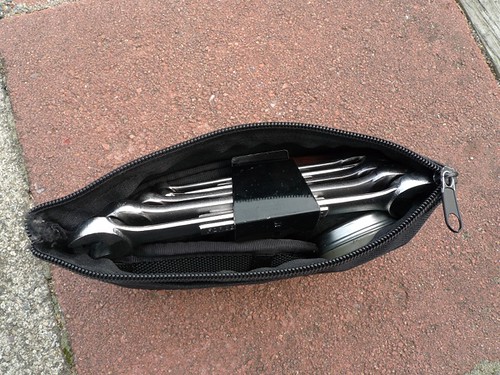
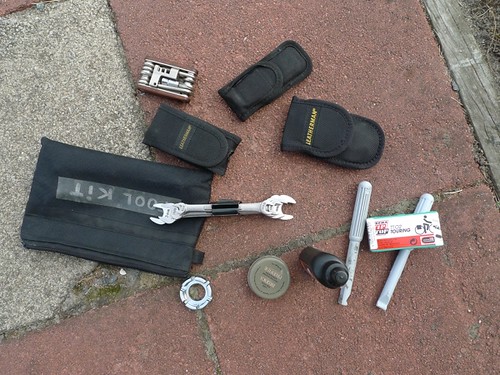
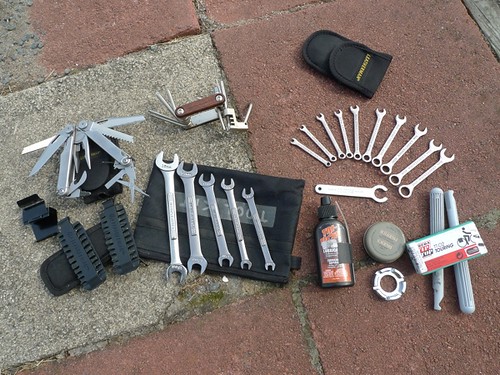
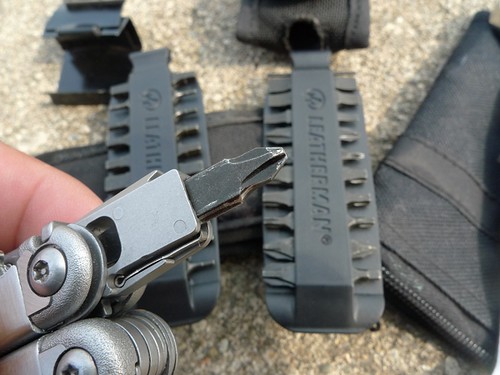





Most battery powered bicycle headlights come with mounting hardware that fastens the lights to your handlebars. Most of the time, this works just fine, but sometimes you don’t want to clutter up your handlebars with accessories: it can get seriously crowded once you add a bell, computer and headlight; most of all these accessories are made to mount on your handlebars and there aren’t a lot of alternative mounting options included “right out of the box”. Some people prefer to mount their headlights lower, like at the fork crown or on the fork. Some claim doing so provides better illumination of the road; others feel it makes the bicycle less visible to oncoming traffic. But if your bike has a front mounted basket, it might not make sense to keep a headlight mounted to the handlebars, especially if you carry bulky loads that obscure the headlight. I’ve had this happen to me when carrying loaded shopping bags. With a front basket, it makes more sense to mount the headlight below the basket, or in front of it. Fortunately, there are some alternative light mounting accessories designed to let you mount your headlight in places other than your handlebars. Cronometro makes a fork mount called the NOB. It’s a simple plastic cylinder the same diameter as the handlebars, attached to an adjustable hose clamp that mounts anywhere on your fork. Most headlights (or computers) designed for mounting onto handlebars can mount directly to the NOB. A similar mount is the Minoura Besso. If you have low-rider pannier racks that make the front fork inaccessible, or if you don’t like the idea of marring your fork’s paint with a clamp-style mount, VO sells two versions of their “Low Down” light mounts, which mount directly to the front axle’s quick release skewer.
I wanted something like the Minoura Besso or the Cronometro NOB, but with a direct attachment method similar to the Low Down that would allow me to use the existing 5mm threaded eyelets on my front fork: I happen to have a plethora of unused threaded eyelets: one on the dropout, another midway up the front fork, designed for a low-rider pannier rack, and two on the front rack, designed specifically for mounting lights. I was thinking of buying a Low Down mount, then threading it to some threaded rod, and finally threading that into one of the eyelets, but I didn’t feel like paying just to relocate my headlight. Instead, I decided to go the DIY route. I raided my parts bins and found an old flat handlebar from an 80s mountain bike:
Perfect! I figured I could cut off a piece, skewer it with some 5mm threaded rod between a couple of washers. For .50 worth of hardware, i could make my own mount. Here’s how I did it:
First, I sawed off about 2.5″ of handlebar to serve as the main part of the headlight mount. I could have gone shorter, but if I ever decide to upgrade my lighting to something really large and bulky, I may want the extra length:
Next, I soaked it in some paint stripper and scrubbed off the white paint, exposing the bare aluminum. To assemble it all together, I needed to figure out how to keep the long 5mm threaded rod centered inside the aluminum cylinder. I was going to use a wine bottle cork stuffed inside the cylinder, but I couldn’t find one narrow enough to fit. I ended up centering the rod inside the cylinder and cementing it in place with hot glue (the kind that come as sticks, and must be dispensed from a hot-glue gun):
Lastly, I fitted galvanized fender washers to both ends, capped off one end of the rod with a 5mm stainless steel dome nut, and fitted a small aluminum spacer to the other end:
I chose to thread the mount to my low-rider threaded boss:
The result is a very sturdy, rustproof headlight mount that utilizes a pre-existing 5mm threaded boss, and that cost me only .50. I’ve never had a headlight mounted so low before, and I haven’t ridden it at night yet, so I can’t yet comment on whether I like it there. As mentioned above, some people prefer this location since it is supposed to provide better illumination of the road, but if I decide I don’t like the headlight mounted so low (for a city bike, I prefer to have illumination that maximizes my visibility to others, as opposed to maximizing my visibility of the road), I can simply relocate it higher up to a threaded eyelet on the front rack (included on the rack for just that purpose), which would place the headlight directly underneath the basket (see above photo, zoomed in below):
If anyone is interested in making one of these, I’d be happy to provide a piece of handlebar stock… I’ve got plenty! I may even be tempted to make a few of these complete mounts for sale at a modest price.
